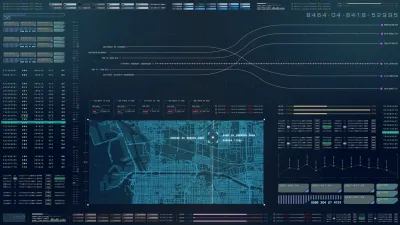An article on big think examines a project to find the unique qualities of urban street grids as an exercise in the potential of Big Data.
Frank Jacobs writes about the project of two French researchers working to develop a mathematical of the unique "fingerprint" of cities. The research of Rémi Louf and Marc Barthelemy examined the street grids of 131 cities around the world for their paper "A Typology of Street Types," finding that they could, in fact, describe street grids as distinct types.
Here is the core of the project's methodology, as described by Jacobs:
If one considers street grids as networks, with intersections as the nodes and street segments as the links between them, it becomes clear that classification should not just rely on proximity (i.e. the spatial distribution of betweenness), but also on geometry (i.e. the spatial distribution of the nodes). The researchers extracted information on city blocks (easier to define than streets) from 131 maps of cities on all inhabited continents, and defined these by area (A) and shape (Φ). The value of Φ is always smaller than one, and the smaller it is, the more anisotropic it is. Meaning that its properties differ according to the direction of measurement.
The article includes several compelling data visualizations as well as some discussion of the taxonomy that emerges from the analysis: according to the researchers, cities fall into four groups, exemplified by Buenos Aires, Athens. New Orleans, and Mogadishu. The third group, exemplified by New Orleans, dominates North America (every city but Vancouver) and Europe (every city but Athens).
FULL STORY: How to Fingerprint a City

Trump Administration Could Effectively End Housing Voucher Program
Federal officials are eyeing major cuts to the Section 8 program that helps millions of low-income households pay rent.

Planetizen Federal Action Tracker
A weekly monitor of how Trump’s orders and actions are impacting planners and planning in America.

Ken Jennings Launches Transit Web Series
The Jeopardy champ wants you to ride public transit.

Crime Continues to Drop on Philly, San Francisco Transit Systems
SEPTA and BART both saw significant declines in violent crime in the first quarter of 2025.

How South LA Green Spaces Power Community Health and Hope
Green spaces like South L.A. Wetlands Park are helping South Los Angeles residents promote healthy lifestyles, build community, and advocate for improvements that reflect local needs in historically underserved neighborhoods.

Sacramento Plans ‘Quick-Build’ Road Safety Projects
The city wants to accelerate small-scale safety improvements that use low-cost equipment to make an impact at dangerous intersections.
Urban Design for Planners 1: Software Tools
This six-course series explores essential urban design concepts using open source software and equips planners with the tools they need to participate fully in the urban design process.
Planning for Universal Design
Learn the tools for implementing Universal Design in planning regulations.
Heyer Gruel & Associates PA
Ada County Highway District
Institute for Housing and Urban Development Studies (IHS)
City of Grandview
Harvard GSD Executive Education
Toledo-Lucas County Plan Commissions
Salt Lake City
NYU Wagner Graduate School of Public Service





























